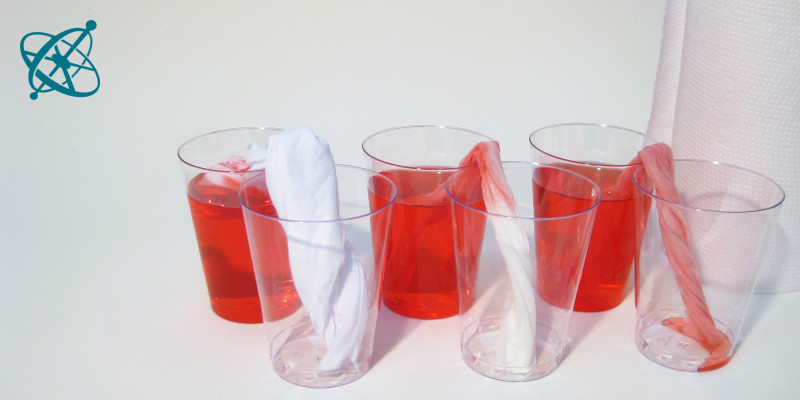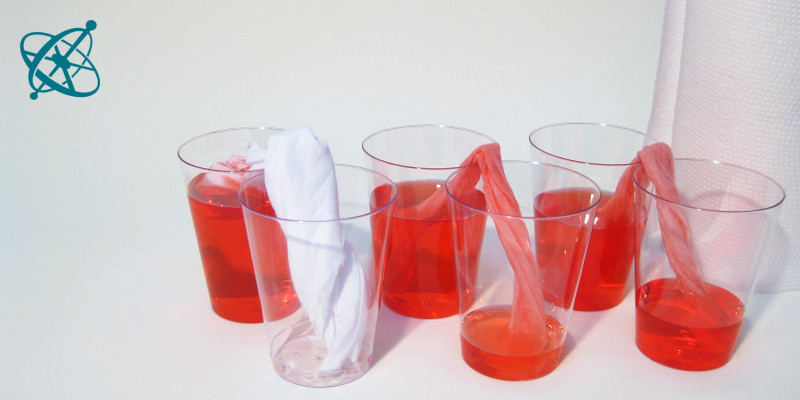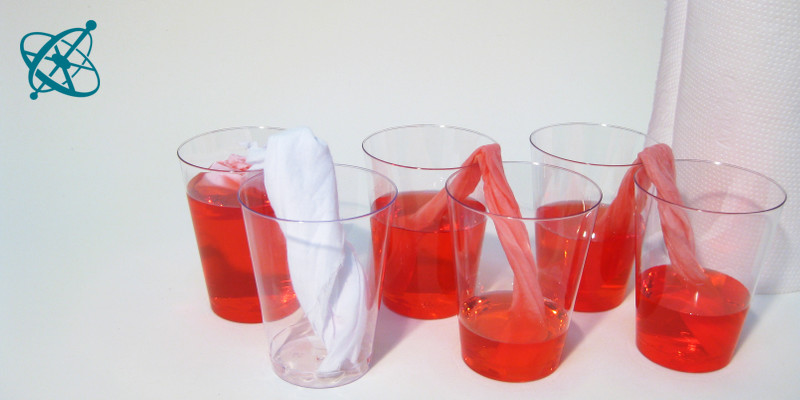 www.sciensation.org | Ciênsação hands-on experiments are published as Open Educational resources under a Creative Commons Attribution-ShareAlike 4.0 International License.
www.sciensation.org | Ciênsação hands-on experiments are published as Open Educational resources under a Creative Commons Attribution-ShareAlike 4.0 International License.
What makes a good wick?

Compare different materials and forms.

And then just observe…

…how some wicks draw up the water…

…faster than others.

While others fail completely.
A wick game
Capillary forces in a wick can transfer oil to a flame or a liquid from one vessel to another. But what makes a good wick? Let your students find out in a small competition.
Getting a clearer understanding of capillary action.
Solving the engineering problem to optimize a parameter (here the volume transferred per time) by choice of the most suitable material and design.
Water (optional: with food coloring)
Different materials that may serve as wick
Challenge your students to design a wick that transfers water efficiently from one plastic cup to another. Put different materials like wool, stripes of textile and plastic, paper towels and others on the teacher's table and let each group choose as they see fit.
It is recommended to place the cups somewhere out of sight for the students – so that your students are less distracted when you go on teaching while the experiment runs in the background.
1. Make a wick that transfers water efficiently (measured in volume per time) from one plastic cup to another.
2. After 20 minutes, the group with the maximum of liquid transferred to the empty cup, i.e. after removing the wick and all the water it holds, wins.
3. What makes a good wick for this experiment and why?
What is necessary for water to be drawn up by capillary action?
› Tiny air spaces between material surfaces.
Can capillary action only draw water upwards?
› No, while capillary forces at times can overcome gravity and draw water upwards, they act also sideways or downwards (then even supported by gravity).
Once the wick is completely wet and all airspaces are filled with water, why does the water continue to 'flow'?
› The wick then acts like a siphon until the water levels match in height.
The difficult part in this experiment is to let it run in the background while you mange to get your students' attention focused on your teaching. It helps to keep the cups out of sight – also making it more exciting as a game.
The quality of a wick depends primarily on the amount, size, spatial orientation and connections of tiny free spaces between surfaces in which the water can be drawn by capillary forces. It also depends on the material properties as capillary actions comes from an interaction of surface tension and adhesive forces between the liquid and surface. Obviously a larger wick will draw up water more quickly, yet since the wick and all the water it contains are removed before measuring the water level, a smaller wick might perform better than a larger one.





